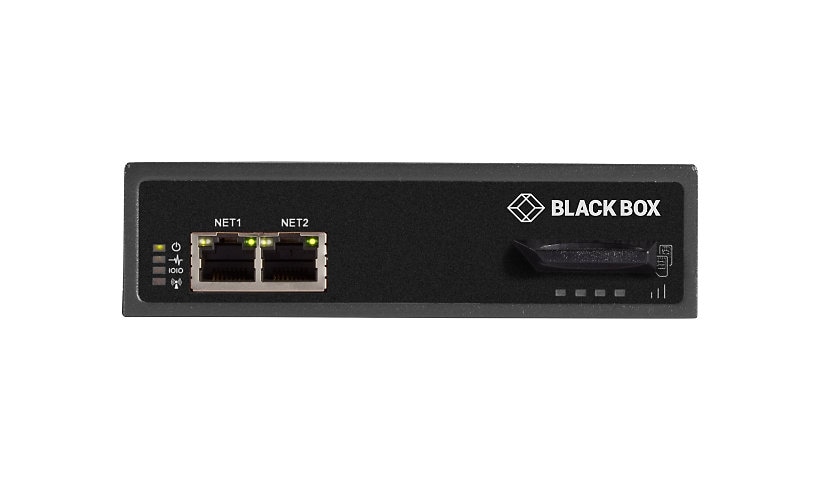
Know your gear
Tight budgets and sparse IT staffing makes managing remote mission-critical IT, network, and power devices while meeting enterprise uptime requirements a challenge for IT managers.
The solution is the LES1604A Console Server with Cisco pinout. This highly reliable console server simplifies out-of-band management of your network, server and power infrastructure in data centers and remote sites.
Use it for easy and affordable out-of-band access to routers, switches, PDUs, firewalls, and other serial consoles. With dual Ethernet ports, the console server gives you control of your network and its physical environment for reliable 24/7 uptime. It provides serial console-port connectivity and supports environmental monitoring, power management and monitoring, plus remote site storage of off-line logs. It also gives you a way to configure and troubleshoot your network that is independent of your data network improving network reliability and availability.
The console server features everything you need to make remote management and fault recovery easy and affordable: an intuitive status monitoring dashboard, pro-active alerting, vendor-neutral power management and simple secure access to devices. You'll be able to maximize uptime while reducing the hassle and expense of truck rolls and remote site visits.
In addition to the traditional RS-232 serial console port connections, the console server supports direct USB 2.0 connections to Cisco USB console ports (just use its embedded AJAX terminal for accessing the connected serial devices). The USB ports enable you to attach peripherals, such as storage and USB consoles.
Dual Gigabit Ethernet ports facilitate connections to primary and secondary networks. The server detects any communications failure on the primary port and switches to the second RJ-45 connection automatically. You can remotely cycle power and reboot computers, even when their operating system is unresponsive
Who can benefit from the 4-Port Console Server? Businesses with remote offices. Organizations with limited IT staffing and budgets. Colocation tenants in data centers. Cloud and hosting providers; ISPs. Research and lab environments. Government, education, and healthcare organizations.
The solution is the LES1604A Console Server with Cisco pinout. This highly reliable console server simplifies out-of-band management of your network, server and power infrastructure in data centers and remote sites.
Use it for easy and affordable out-of-band access to routers, switches, PDUs, firewalls, and other serial consoles. With dual Ethernet ports, the console server gives you control of your network and its physical environment for reliable 24/7 uptime. It provides serial console-port connectivity and supports environmental monitoring, power management and monitoring, plus remote site storage of off-line logs. It also gives you a way to configure and troubleshoot your network that is independent of your data network improving network reliability and availability.
The console server features everything you need to make remote management and fault recovery easy and affordable: an intuitive status monitoring dashboard, pro-active alerting, vendor-neutral power management and simple secure access to devices. You'll be able to maximize uptime while reducing the hassle and expense of truck rolls and remote site visits.
In addition to the traditional RS-232 serial console port connections, the console server supports direct USB 2.0 connections to Cisco USB console ports (just use its embedded AJAX terminal for accessing the connected serial devices). The USB ports enable you to attach peripherals, such as storage and USB consoles.
Dual Gigabit Ethernet ports facilitate connections to primary and secondary networks. The server detects any communications failure on the primary port and switches to the second RJ-45 connection automatically. You can remotely cycle power and reboot computers, even when their operating system is unresponsive
Who can benefit from the 4-Port Console Server? Businesses with remote offices. Organizations with limited IT staffing and budgets. Colocation tenants in data centers. Cloud and hosting providers; ISPs. Research and lab environments. Government, education, and healthcare organizations.
